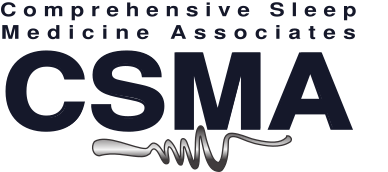An Explanation of how to perform the Chin Press / Tongue Curl Maneuver by Jerald H. Simmons, M.D.:
Predictors of airway obstruction during sleep have been described over the years and have consisted of parameters, such as BMI or neck circumference. Many thin individuals with low BMIs and small neck circumference have OSA attributed, in many cases, to micrognathia. Other dynamic measures such as the muller maneuver or pharyngotomy have been reported as well but have not proven accurate.
An assessment that we perform routinely during physical exams, referred to as the Chin Press Tongue Curl maneuver, has proven extremely insightful to the clinician and patient and is described below and referred to as the. This bedside assessment demonstrates the vulnerability of the airway to collapse in a supine patient when the mandible is placed back, bringing the tongue base towards the posterior pharyngeal wall.
- 1. The patient is placed in the supine position and instructed to maintain a gentle bite while performing deep nasal respiration. Attention is directed toward the degree of respiratory effort exerted during both inspiration and expiration. This is considered the baseline respiration with which the Chin Press / Tongue Curl respirations are to be compared. If there is difficulty with respirations during the baseline portion, the most likely cause is nasal airway obstruction. While maintaining a gentile bite the patient’s temporomandibular joint is in a centric occlusive relation position.
- 2 The Chin Press (CP) portion is performed as follows: With the patient’s mandible relaxed, teeth slightly apart, the examiner applies gentle pressure on the chin in a downward direction towards the neck, in an attempt to retro-position the mandible (see figure B). Frequently this is best achieved by having the patient first open their mouth and having the examiner manipulate the mandible back in a downward closed position while exerting gentle downward pressure. The patients is encouraged to relax their tongue and pharyngeal muscles and not to prevent any obstruction in the posterior pharyngeal region that may occur during this part of the procedure.
- 3 Next, the patients again perform deep nasal inspiration and expiration during this Chin Press (CP) manipulation as in the baseline condition. The responses are graded as no obstruction = 0, partial obstruction =+1, and complete obstruction = +2. The greatest degree of obstruction during inspiration or expiration is used for scoring the response.
- 4 Next, the Tongue Curl (TC) enhancing maneuver is performed. This consists of the same manipulations performed with the Chin Press with the following addition. The patient places the tip of their tongue on the roof of their mouth (hard palate) and then moves the tip of the tongue to the posterior portion of the hard palate. This further retro positions the mandible, and tongue to test for airway obstruction. Therefore, this enhances the likelihood of obstruction during respiration. The patient again performs deep nasal inspiration and expiration during this Tongue Curl (TC) manipulation, as in both the baseline and CP conditions. The responses are graded as no obstruction = 0, partial obstruction =+1, and complete obstruction = +2. The greatest degree of obstruction on either inspiration or expiration is used for scoring the response.
The CP/TC scores range from 0 to 4. 0,1 or 2 represents no, partial, or complete obstruction respectively on either the CP or TC. A score of 4 has a high likelihood of obstructive sleep apnea and a score of 0 has a low likelihood.

